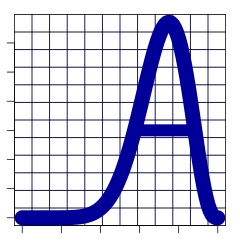 Agency Statistical Consulting
Agency Statistical ConsultingKnowledge of a subject mostly means knowledge of the language of that subject. Biology, after all, is not plants and animals; it is a special language employed to speak about plants and animals. History is not events that once occurred; it is language describing and interpreting events, according to rules established by historians. Astronomy is not planets and stars but a special way of talking about planets and stars, quite different from the language poets use to talk about them.--Neil Postman
Doctors, firefighters, plumbers, pilots, cooks, accountants, paramedics, artists, . . . they all have their own language. Statisticians do too. And before we get to any math, learning the language of statistics can help you understand it.
Fundamentally, research is an attempt to understand how something works in the world. How fish grow; how sepsis kills people; how planets orbit the sun; how wildfires burn; whatever a researcher wants to understand.
The problem is, you never get to study the phenomenon itself. You may want to learn something about the abstract concept of "growth in fish" or "mortality in sepsis" or "return of spontaneous circulation" or "orbital mechanics," but you can rarely study the concept itself, directly, in the abstract. You have to study it in the context of particular fish in particular lakes, or particular patients in particular places and times. This is your population of interest.
But you don't even get to study your population! Even if you could drain a whole lake and weigh all the fish, that would not include the fish yet to be born in that lake. Even if you can study all cases of meningococcal meningitis in your county (and public health researchers often have access to all those data), you can't study the cases that have yet to occur. All you can ever study is part of your population. This is your sample. Let's call the members or elements of your sample subjects. And here's the key: you could have gotten a different sample! If you did your study or dropped your fishing net on a different day, or in a slightly different place, or in a slightly different way, you'd have gotten different subjects in your sample---so you would have gotten different data to analyze.
The essence of statistics is designing and carrying out studies in samples, and then analyzing the data from those samples, in order to draw conclusions about the population. The essence of science is then to draw conclusions about how the phenomenon in general works.
The workings of that phenomenon of interest are often summarized as a number. It might be a single number, like the average weight of fish in a lake; this is called univariate statistics. Or it might be a number that relates or connects two things, like how the weights of fish vary with the temperature of the water; this is called bivariate statistics. Or it might be a graph. Or a mathematical function, like E = mc2
Any such number, graph, or function that summarizes how something works in the population is called a parameter. But again, you never get to know the true value of the parameter (see above). What you get to know, what you get to calculate from the data in your sample of fish or patients or planets, is an estimate of the parameter. Bottom line, statistics is all about:
To learn why an estimate might be "off" from its parameter, see Part 2 of "The language of statistics"